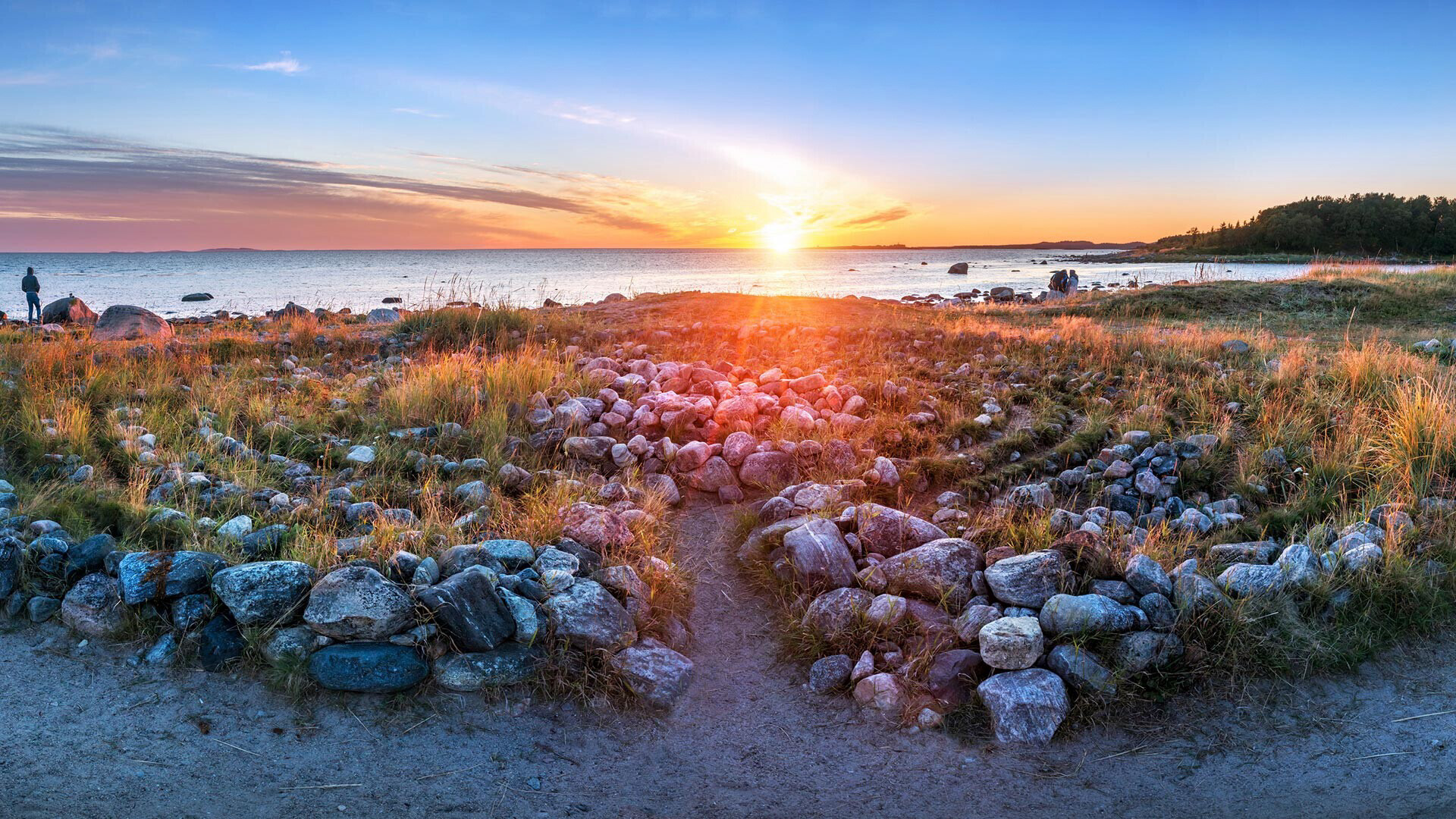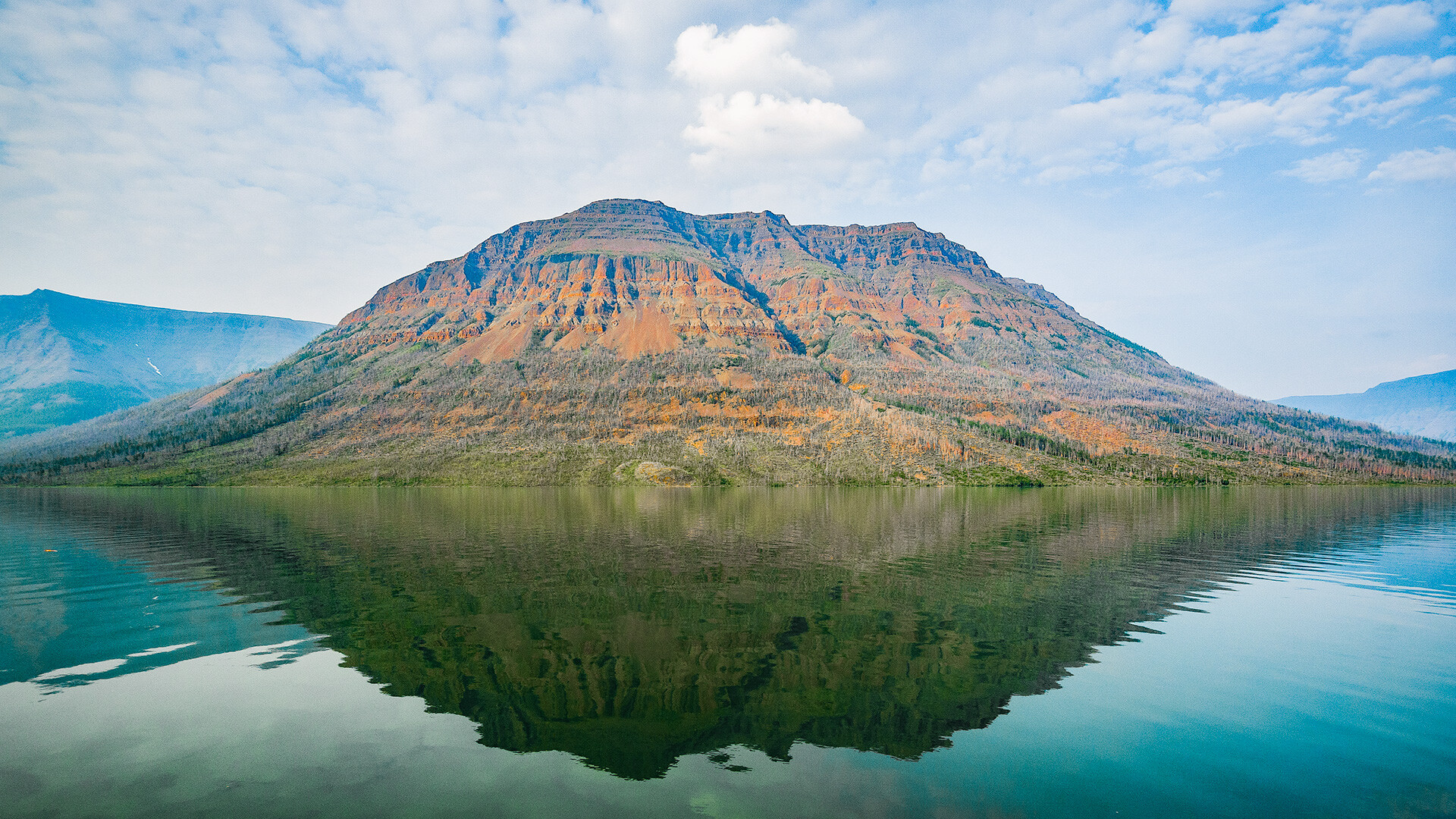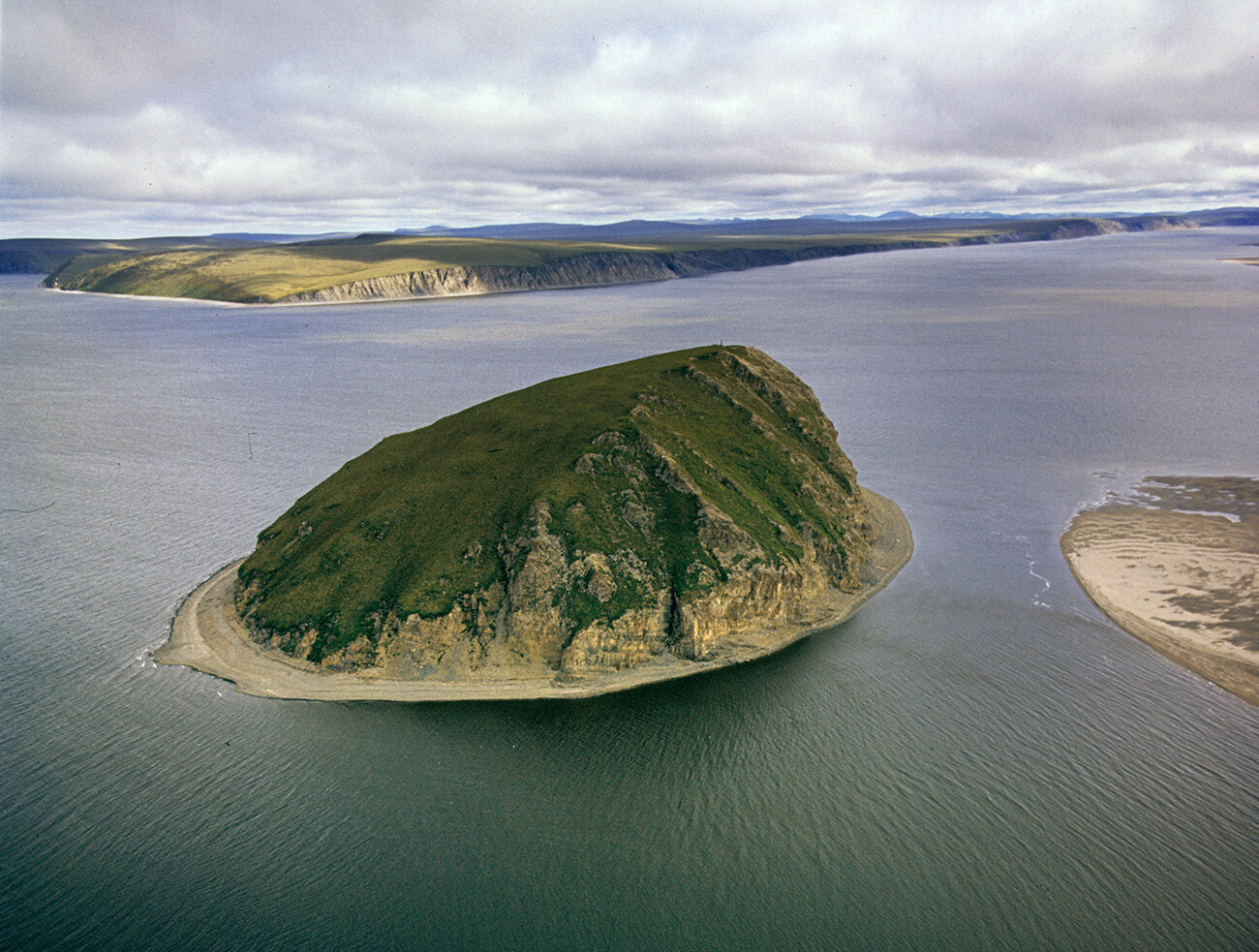
The labyrinth of the Solovki Islands.
Legion MediaNot just Russians live beyond the Arctic Circle, but also the representatives of 40 indigenous peoples of the North. They include the Nenets, the Sami, the Chukchi, the Enets, the Nganasans, the Yukaghirs and many more. The northern peoples preserve the traditions of their ancestors, who revered the power of nature. There are also a lot of enduring ancient sanctuaries in the Arctic that hosted traditional rituals in the past. People come to some of these places even today for the support of the spirits.

Shaitan Mountain on the Lama Lake.
Pavel KuzmichevLake Lama in Krasnoyarsk Territory is uninhabited, but there are several tourist bases. Most often, the routes across the hard-to-reach Putorana Plateau start there.
The furthermost, eastern end of the lake is believed to have been a place of power since ancient times; wooden idols of the Evenks have been found there and, according to legend, back at the end of the 1930s, the last Evenk shamaness was still living there. There’s also a mountain, where you can see the image resembling the ‘Shaitan’ (‘Devil’).
The northern peoples consider the waters and the shores of Lake Lama to be sacred and they believe that it grants wishes.
Before them, other peoples lived there, about which we know almost nothing. Items made of bronze were found here in the middle of the 1970s; the earliest of them belong to the 18th century B.C. Among them were also ritual items. Also, human-made buildings with megalithic masonry have been discovered in different places.
Read more about the lake here.

The remote Yttygran Island in the Bering Sea is known as the most ancient settlement of the Eskimo sea hunters. Until the 1940s, the village of Siklyuk was located there, the inhabitants of which slowly moved to the mainland. Close to it, in the 1970s, scientists discovered a whale bone alley during an expedition. It dates back to the 14th-16th centuries, but there’s no surviving information about what it was used for.
The alley consists of two rows of gray whale and bowhead whale bones extending to a length of about 500 meters. The bones are separated into several groups and are arranged in a specific order. The scale of the whole structure is staggering: the bones stretch to a height of 5 meters and despite weighing up to 300 kilograms each, they’re all firmly dug into the ground. There are also both whale skulls and pits where the catch was stored.
Some specialists believe that this alley was a sacred place for sea hunters. Others believe that hunters dried their boats on these bones, bottoms up; they used skulls for mooring.

In the Nenets Autonomous Area, between the Barents Sea and the Kara Sea, lies Vaygach Island. The Nenets also believe it to be sacred. In the 17th century, travelers discovered hundreds of idols there. Approximately fifteen of those stone idols survive to our day. Most likely, the northern peoples made offerings to the spirits and asked to send them luck during fishing and hunting.
Interestingly, the island was uninhabited until the 1930s, although its existence was known. It was used only as a transit point. With the beginning of industrialization, geologists discovered ore deposits in these lands. Naturally, a local settlement appeared called Varnek and named after one of the early polar explorers. Prisoners mostly worked in the mines. In 1938, production already had to be wrapped up, because the mines began to be flooded with water. Today, approximately one hundred people remain in the settlement.

In the very north of Yakutia, the great Siberian Lena River flows into the Laptev Sea of the Arctic Ocean. In its delta lies Stolb Island, with a peak measuring 114 meters in height. The Yukaghir people consider this island extremely sacred. They speak of a legend that the island was created by a shaman on a place where his daughter was killed by his enemies and her soul can appear before people. To “please” the spirits, people throw candy or coins when passing by this island. The rare tourists that reach this remote place continue this tradition to this day.

The largest stone ‘Babylons’ (which is what these spiral-shaped labyrinths are known as) are located on the Solovetsky Islands, but similar structures can also be found in other places of the Russian North. The most famous labyrinths beyond the Arctic Circle are located not far from the city of Kandalaksha and the village of Umba in Murmansk Region. All such labyrinths in Russia are located near water: either on islands or in river mouths (but not lakes!).
The northern labyrinths began to be systematically reported at the beginning of the 19th century, although mentions of such structures date back to the middle of the 16th century. The fullest description of the Solovetsky labyrinths was made by ethnographer Nikolai Vinogradov in 1927. Scientists still don’t know what the purpose of these labyrinths was. Many contemporary researchers believe that such structures had a ritualistic meaning.
Read more about the labyrinths here.
Dear readers,
Our website and social media accounts are under threat of being restricted or banned, due to the current circumstances. So, to keep up with our latest content, simply do the following:
If using any of Russia Beyond's content, partly or in full, always provide an active hyperlink to the original material.
Subscribe
to our newsletter!
Get the week's best stories straight to your inbox